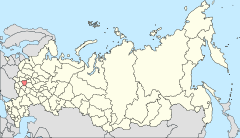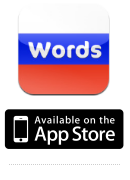| FR | About us | Home | User agreement | Link to us |
Russian Samovars
Samovars and tea-drinking are an indispensable element of Russian culture. In modern Russia, samovars are rarely used to boil water for tea as originally intended, however many families place samovars in the center of the table during holiday celebrations. Reserving pride of place for a samovar at the festive table is both a tribute that Russians give to their ancestors and a ceremony that embodies warm-hearted hospitality.
What is a Samovar?
A samovar is a device traditionally used to heat and boil water for tea. The word samovar in Russian is derived from "сам" meaning self and "варить" meaning to boil. The name can be loosely translated into English as "self-boiler". Samovars are made from metal and consist of a large urn-shaped container and a metal pipe running vertically through the middle. To boil the water inside a samovar, the pipe is filled with solid fuel such as pine cones, charcoals and wood chips which are set on fire. A small tea pot is used to brew a tea concentrate. The tea pot is often placed on top of a samovar to keep it heated with the passing hot air.
The tea is served by pouring tea concentrate into a cup and diluting it with boiled water. The water is released through a faucet at the base of the metal container. Samovars were one of the earliest home appliances in Russia. Families and guests would sit at a large dinner table to have a leisurely talk and discuss the latest events while drinking hot tea.
What is a Samovar singing about?
Russian people believed that the samovar has a soul. This belief was mainly based on the fact that samovars were producing different sounds when being heated with fuel. The shape of the samovar's body accounts for amazing acoustics and water makes peculiar noises when it is being brought to the boil. It was common to say that "a samovar is singing" (самовар поёт).
Who invented a Samovar?
The oldest pottery samovar-like was found in Azerbaijan. Its age was 3700 years, which is about 1700 older than a samovar discovered in Egypt. There were similar devices found in China but they weren't used for making tea.

In Russia, the first copper samovar was made in 1778 by the Lisitsyn brothers in Tula, a city known for its metalworkers and arms-makers. Within the first 70 years, numerous samovar-makers in Tula were producing 120 thousand samovars every year. Samovars were mainly made from nickel and copper and particular attention was paid to details. The handles and the faucet could be made in the form of vines or the claws of a dragon, while the body of the samovar could be engraved by hand.
The samovar manufacturing process consisted of 12 stages with individual masters specializing on each stage of production. Interestingly, the population of the whole village could be specializing on manufacturing of a single element, such as the handles of the samovar. The final assembly and trimming of samovars was performed at factories. By the early twentieth century there were about 170 different models of samovars. Samovars were sold by weight—the heavier the samovar the higher the price.
Samovar proverbs
Today, Tula is known as the historical center of samovar production. There is a Russian proverb В Ту́лу со свои́м самова́ром не е́здят, which means "You don't take a samovar to Tula". It is used in the same sense as "to bring coals to Newcastle".
Samovars in modern Russia
Modern factories produce both antique and electric samovars. The traditional models are mostly purchased as souvenirs. The electric samovars use an electric heating element instead of the fuel pipe. Electric samovars serve the same purpose as the electric kettle and can be easily used in any household in Russia.
If you are going to buy a samovar made in Russia to bring back to your country, remember that Russian samovars are made according to the Russian electric standards. Russia has 220 volt electricity and a different electric plug. You will need to consult with the manufacturer about possibility of using such a samovar in your country. Whether you use it to boil water or not, a Russian samovar will always make a great souvenir or a home decor element.
Today, there are several museums dedicated to the "Russian tea machine". The most famous museum is Mikhail Borschev's private collection of more than 400 samovars. If you'd like to further explore the wonders of Russian folk arts you can visit the online samovar museum at http://www.samovaroff.net/ (the site is available in Russian only).
Got questions?
Ask them in the Russian Questions and Answers — a place for students, teachers and native Russian speakers to discuss Russian grammar, vocabulary, pronunciation, and other aspects of the Russian language.
Copyright 2001-2026 MasterRussian.com | Privacy Policy | Contact Us
 Russian Lessons
Russian Lessons
- Russian alphabet
- Names of letters
- Russian Q&A new
- Pronunciation: Cons.
- Pronunciation: Vowels
- Noun Gender/Number
- Cases of Nouns
- Russian Greetings
- Personal Pronouns
- Learning Russian
- 1000 Common Words
- 500 Russian Verbs
- Top Russian Nouns
- » All lessons
- » Guest lessons
 Browse Topics
Browse Topics
- Start learning Russian
- Forum
- Bookstore
- Dictionaries
- Russian - basic
- Russian - adv
- Pronunciation
- Russian Blog new
- Reading
- Test & quizzes
- Translation
- Verbs
- Verb Conjugations
- Russian numbers
- Russian Tests new
- Vocabulary
- Writing
- Folk music
- Fun stuff
- Leo Tolstoy
- Learner's lore
- Literature
- Personal blogs
- Picture Dictionary new
- Proverbs
- Publications
- Radio & TV
- Russian culture
- Schools in Russia
- Russian Words
- Russian names
- Software
- Russian Words iPhone

Search MasterRussian

English » Russian dictionary

WORD OF THE DAY
![]() RSS
|
iGoogle
|
My Yahoo!
RSS
|
iGoogle
|
My Yahoo!
Meaning: where
Pronunciation: [gdyeh]
Learn Russian words more... »
TODAY'S STREET SIGN

Russian: Сбербанк России
English: Sberbank of Russia
FOLLOW US ON TWITTER

MasterRussian on Twitter



